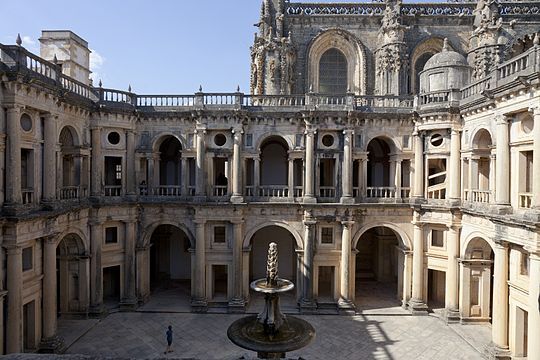When Afonso Henriques became the first king of Portugal in year 1143, he was fortunate to inherit a substantial infrastructure through the cultures of two great civilisations which had prized water as much as they did precious metals.
During nearly seven centuries, the Romans constructed roads and bridges to connect the forts, factories and settlements which changed the Iberian economy and greatly improved the hygiene of the populace by installing baths and sanitation to which water was brought, if necessary, by aqueducts.
But these concerns for public health collapsed with the fall of the western Roman Empire around year 500 and their replacement by the Visigoths and Suevi as the new rulers of the peninsula. They did not possess the advanced engineering skills of the Romans and much of the infrastructure fell into disuse. The dark ages began!
However, in year 711 the Moors invaded and occupied nearly all of central and southern Iberia. With them came the best systems of irrigation and conservation for agriculture and introduction of the concept of interior plumbing for their dwellings which often possessed fountains central to their courtyards

Both Romans and Moors built their palaces and villas in elevated positions near to rivers and lakes from which water for daily requirements could be drawn but potable supplies consisted of the storage in cisterns and butts of rainwater gathered from rooftops or brought from springs by pipes and aqueducts.
Drainage from kitchens and washhouses by stone conduits led to an elementary system of irrigation for distribution to orchards and vegetable gardens and partly to tanks to which forest debris, organic waste and faeces from livestock and portable latrines was added. Shallow wells provided for animals using either pumps or winch.
This rustic management of water was crudely effective in preventing the spread of pestilence but, with the growth of the population, urban concentrations without piped water and sewage disposal presented a breeding ground for plague, leprosy and other highly contagious diseases. The narrow streets often had a shallow conduit into which the contents of chamber pots and earth buckets were emptied. Hopefully, pedestrians would be warned with the cry of “Gardy Loo” when discharges were made from upper floors!
Fortunately, the Christian Cistercian order trained many of its monks as civil engineers for the building throughout Portugal of monasteries, churches, lazarettos and castles for their military orders and royalty. One of the finest examples of their work can be seen in Tomar at the Convent of Christ which occupies a commanding position near the river Nabão and was possibly preceded by fortifications as a “castro”. The initial construction of the castle in the 12th century was to provide a headquarters for the religious order of Knights Templar and a monastery. As the location did not possess wells, rainwater was collected from roofs and through a system of canals cut through the rock so that five cisterns could be filled. These were located under the paving of cloisters and in the basement of adjoining buildings and distributed water through a system of pipes to the dormitories with their adjoining ablutions and to the kitchens and workrooms of the monks.

Sanitation was vastly improved in the 16th century by the construction of a stone aqueduct over a distance of nearly six kilometers. This brought, by gravity and three locks, excellent spring water from nearby hills to fill a new reservoir which both reinforced the existing system and provided potable water to the dormitories, refectory and kitchen. The drain-off from these points was used partly for irrigation to the gardens and livestock contained within the walls and then released to the exterior. The excess from the latrines was fed into two separation tanks and was released though the walls of the convent to be used as the basis for a compost mixed with forest debris and vegetable waste. Two ventilation ducts prevented unpleasant odours penetrating the living quarters. This ingenious system was copied for many other medieval buildings and remained in part function until quite recently.

The village which had grown between the river Nabão and the castle walls accommodated a populace estimated at 800 souls in the 15th century of whom nearly one half were Sephardic Jews. They were employed as administrators for the vast estates of the Templars and built a synagogue which included a “mikveh” for the rituals of cleansing by total immersion. For this, a constant supply of “living water” was necessary by Hebrew law but there is no record of a spring in that location so it is a matter of conjecture as to the existence of another aqueduct at that time.
by Roberto Cavaleiro - Tomar, 11 February, 2025












